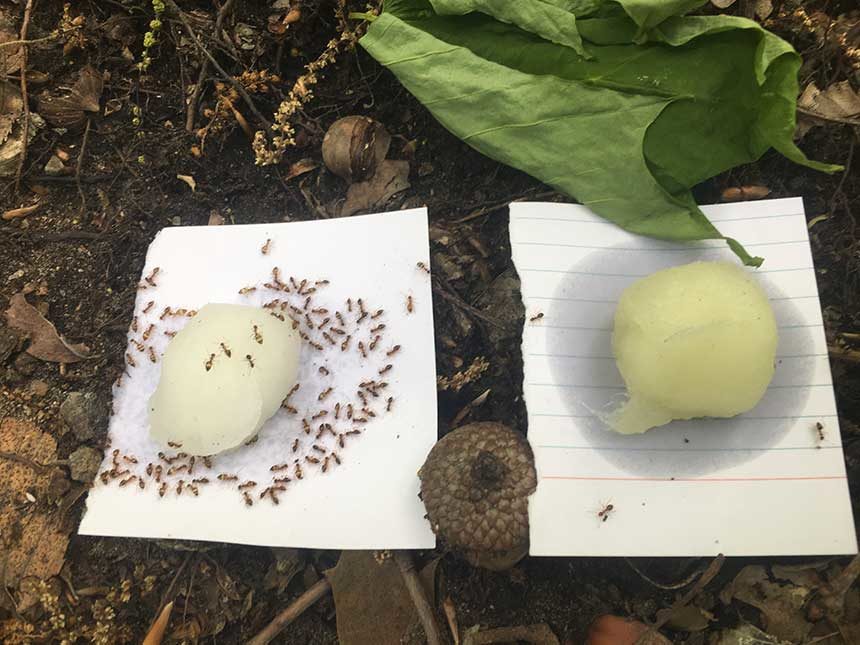The Buggy Down Bronx:
Mapping Ant Diversity Across Van Cortlandt Park
by: Alex Byrne
As the Jurassic faded into the Cretaceous, planet earth began to experience a revolution in sociality with the radiation of one of the most ecologically dominant groups of animals to date, the ants. By living communally in colonies that can number in the thousands of individuals in some species, it is thought that ants turnover more soil than earth worms, provide habitat for a number of organisms, cycle the majority of the forest floor organic material and are typically the first animals to arrive to newly arisen resources on the forest floor (Holldobler & Wilson 1999). For example it was recently shown that in the rain forests of Borneo ants were responsible for consuming 51 % of baits placed within the forest when considering both foraging insects and mammals (Griffiths et al 2017). In addition, the majority of ant mediated flow of nutrients is performed by only a hand full of dominant species (Houadria et al 2015). In forest ecosystems around the world this suggests that ants are keystone players that mediate a large part of the functionality of ecosystems and constitute often the majority of the animal biomass (Holldobler & Wilson 1999).
In New York City, scientists are just starting to become acquainted with the ants that have assembled to call city parks, abandoned lots, side walks and street medians home (Pecarevic et al. 2010). Cities are complex landscapes that experience variable levels of stress including relatively higher temperatures, aridity, pollutants and disturbance through development. This means urban arthropods such as ants need to possess the necessary adaptations to live in urban areas, however no such full understanding exists. Despite the important implications of responses of ant communities to urbanization, few studies have illuminated the role of ants in NYC, for example new evidence from the sidewalks of Manhattan have demonstrated that ants provide services such as reducing the amount of organic waste in land fills by consuming “garbage” on the street and within trash cans before heading to the dump (Youngsteadt et al. 2014). As we begin to understand the ways in which human lives interact with urban ants it is time we turn our hand lenses to the last great forests of New York City, peel back the leaf litter and explore how over 10 billion individual ants help to maintain, manage and create our urban green spaces.
The Friends of Van Cortlandt Park in collaboration with Parker Gambino PhD, field associate from the American Museum of Natural History are teaming up in order to document and map the Ant, Wasp, Bee and Hornet diversity within Van Cortlandt Park’s Forest and wetland habitat. Specifically, FVCP Environmental educator Alex Byrne is looking to understand how natural areas within urban parks such as forest, wetlands and meadows influence the ant community structure and how the nutrient requirements of those ants change in different habitats. Alex spent the summer in part soaking cotton balls in olive oil (lipid), sugar, salt water and amino acid, placing those cotton balls in tubes and placing those tubes in replicate in different habitats within the park. Alex is in the process of analyzing the data but has already begun to reveal aspects about Van Cortlandt ant ecology that to date have been unknown or overlooked. For example, the preliminary data suggests that the most abundant foraging ant within the park at the peak of the summer is a non-native species from Asia, Nylandaria flavipes. It also appears that the use of oil or sugar is not necessarily a reflection of what species are present but a reflection of what habitat those species are present within. Lastly ~ 32 species of Ants were recorded from Van Cortlandt Park, some representing the oldest Ant lineages in the world, Ants that spray formic acid from their abdomens, Ants that are socially parasitic on other colonies, Ants that tend to herds of aphids both above and below ground, Ants with origins in Asia and Ants that appear on the IUNC Endangered and Threatened species list. Next warm day you find yourself in Van Cortlandt Park, go flip over a rock and sit and watch the little things that make our park go round.
Check out this video of a colony of Chestnut Carpenter ants Camponotus castaneus filmed in a canopy gap in the Northwest Forest. Chestnut Carpenter ants are rarely seen as they are nocturnal foragers.
Literature cited:
Holldobler, B., & Wilson, E.O. (1990) The ants. Harvard Press
Elsa Youngsteadt, Ryanna C. Henderson, Amy M. Savage, Andrew F. Ernst, Robert R. Dunn and Steven D. Frank. Habitat and species identity, not diversity, predict the extent of refuse consumption by urban arthropods. Article first published online: 2 DEC 2014 DOI: 10.1111/gcb.12791
Griffiths, H. M., Ashton, L. A., Walker, A. E., Hasan, F., Evans, T. A., Eggleton, P., & Parr, C. L. (2017). Ants are the major agents of resource removal from tropical rainforests. Journal of Animal Ecology.
Pećarević, M., Danoff-Burg, J., & Dunn, R. R. (2010). Biodiversity on Broadway-enigmatic diversity of the societies of ants (Formicidae) on the streets of New York City. PLoS One, 5(10), e13222.


